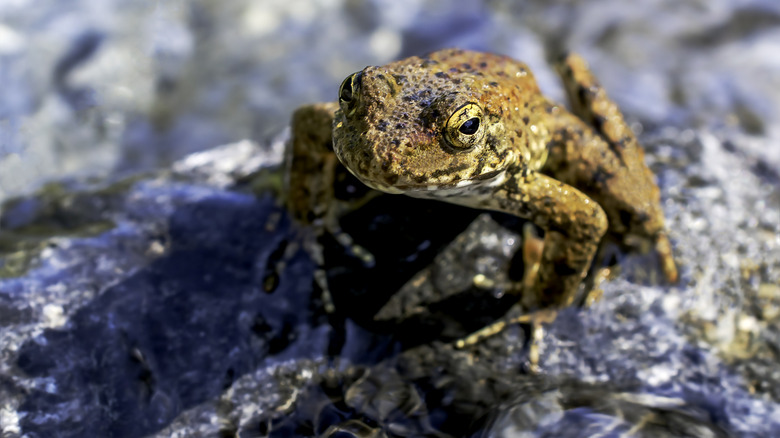The Disease-Stricken Animal The Oakland Zoo Is Helping Repopulate In California Parks
In the late '70s, a once-abundant creature had all but disappeared from California's high-elevation lakes, driven to near extinction by a highly contagious, deadly disease. Known as chytrid fungus, this disease affects the skin and impairs vital functions. Over the years, 90% of this cold-blooded species' population fell victim to the fungus, prompting conservationists and ecologists to step in and help. Now, thanks to a recovery effort led by the Oakland Zoo, the mountain yellow-legged frog is making a careful but hopeful return to the Sierra Nevada, the frog's natural habitat.
The Oakland Zoo has been raising the frogs as tadpoles in a controlled environment and releasing them into the wild since 2015. The most recent release occurred in the summer of 2025, after the frogs were collected as tadpoles in 2023 and treated with an anti-fungal solution. The event marked a milestone for the zoo: the 1,000th frog returned to the wild since the beginning of the recovery program, according to a press release from the zoo.
Because the yellow-legged frog is an alpine species, meaning it lives in high elevations, the amphibians were transported via helicopter. A total of 43 frogs made the 250-mile journey. The release spot? A lake in Sequoia and Kings Canyon National Park. Scientists hope that by reestablishing the frogs in their native range, the species and ecological benefits can be restored, including insect control.
Other conservation efforts for yellow-legged frogs
The Oakland Zoo's ongoing recovery program is a collaborative effort that involves UC Santa Barbara, the National Park Service, and other conservation partners. In addition to the reintroduction of the frogs, researchers use pit-tagging technology to monitor the released frogs over time. This allows their survival rates and disease resistance to be tracked, along with long-term population trends.
One of the most critical contributions that researchers have made to conserving the yellow-legged frogs is the exploration of potential vaccines. However, a controlled study in 2010 in the Journal of Wildlife Diseases that involved formalin-killed chytrid fungus as the potential vaccine didn't seriously reduce the infection rate of the disease. Yet, this didn't stop other teams from exploring possible inoculation options. Additional vaccine experimentation took place in 2016.
Today, researchers at UC Santa Barbara and the Oakland Zoo are actively working to create an inoculation procedure. This involves infecting the frogs with a specific amount of the deadly fungus to see the immune system's response, similar to the parvo vaccine for dogs, or any other type of vaccine. "We hope that this controlled infection will allow their immune systems to recognize and fight off the fungus if they encounter it again after they have been released to the wild," a statement reads on the Oakland Zoo website. Will the procedure work? Time will tell.
Curious about wildlife conservation efforts of other species? Read about Contender, the largest great white shark to be tagged in the Atlantic.

